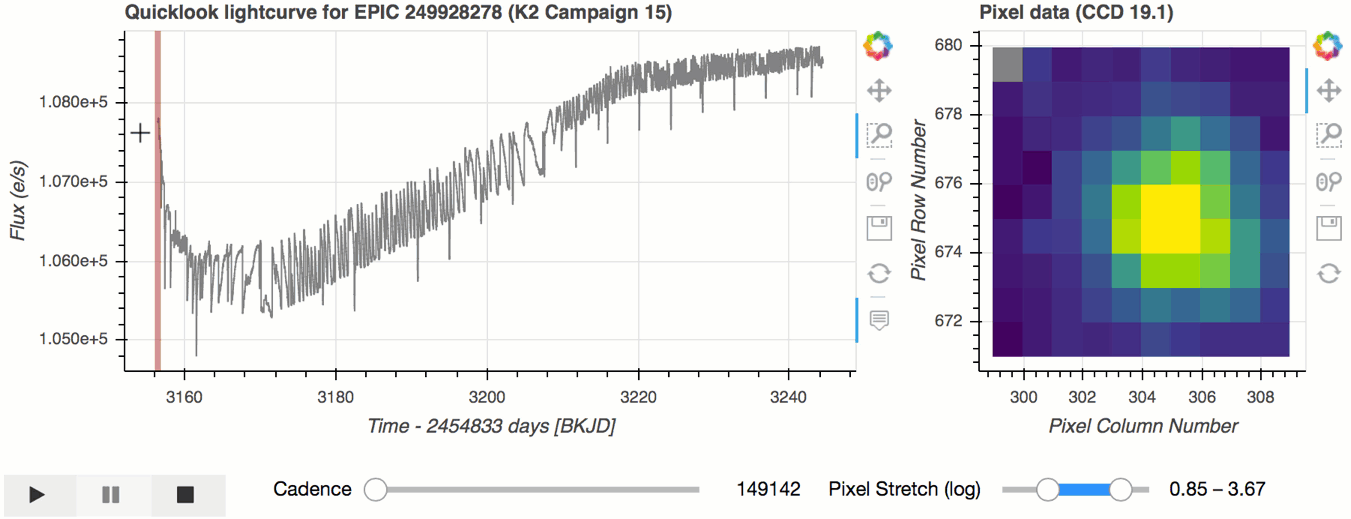The new lightkurve Python package
for Kepler and K2 data analysis, which we first announced in March,
contains a new feature: interact().
The tool strives to solve a common stumbling block in Kepler data analysis:
"I see a blip in my lightcurve. Is it real or instrumental?"
interact() alleviates the guesswork by providing users with an easy-to-use
Python notebook widget to interactively inspect the pixel data
along a lightcurve.
A user can move a slider to rifle through cadences, while seeing the postage stamp images update in real time. A red vertical bar highlights the moment in the lightcurve. Mousing-over individual lightcurve points flashes up a hover-over tool tip with ancillary metadata about that particular cadence (e.g. quality flags). The tool offers many avenues for customization, including zooming, panning, and screen stretch.
The command interact() is a method of the KeplerTargetPixelFile class,
meaning that you can simply load in a target pixel file and append .interact() to the file as follows:
from lightkurve import KeplerTargetPixelFile
tpf = KeplerTargetPixelFile.from_archive(target="Trappist-1")
tpf.interact()
You will need to upgrade your installation of lightkurve to the latest version
(v1.0b5) for this to work. This can be done via the command line as follows:
$ pip install lightkurve --upgrade
We invite you to try out interact() today and let us know if you have any problems by opening a GitHub Issue.
A YouTube screencast and a tutorial in the documentation further illustrate the features of the tool.
